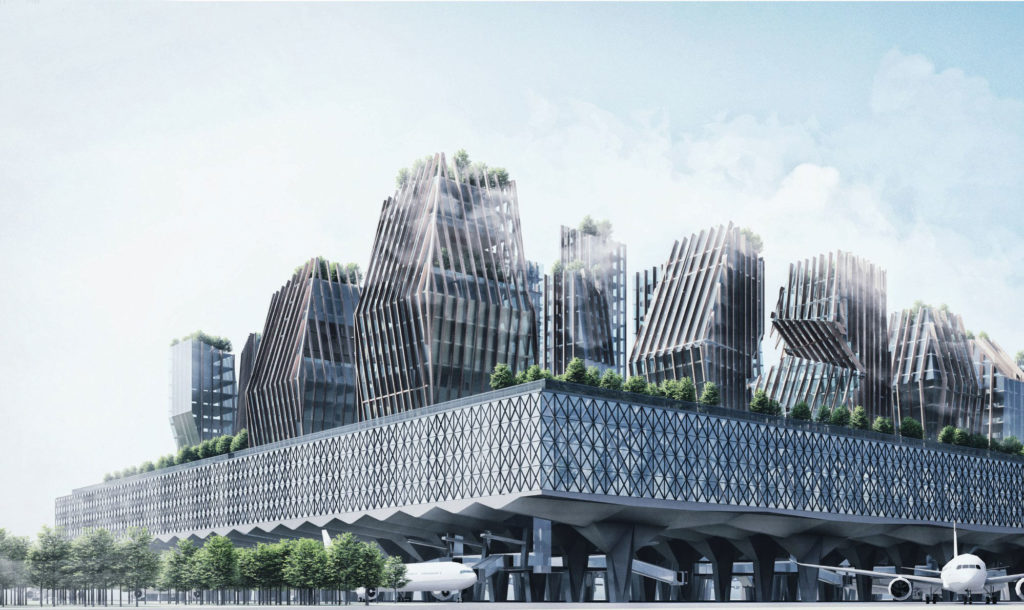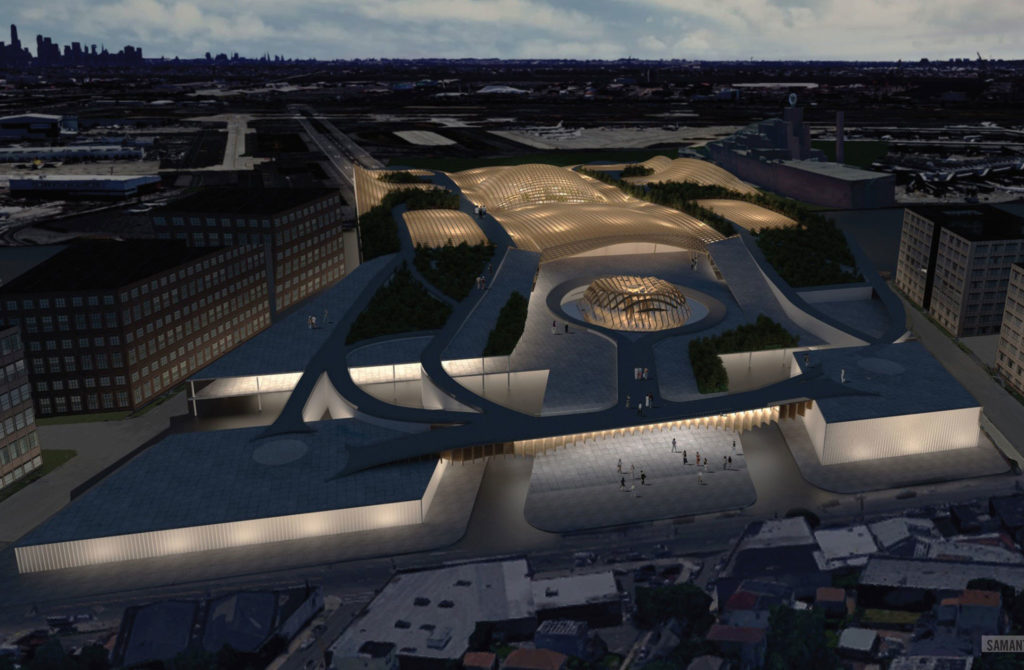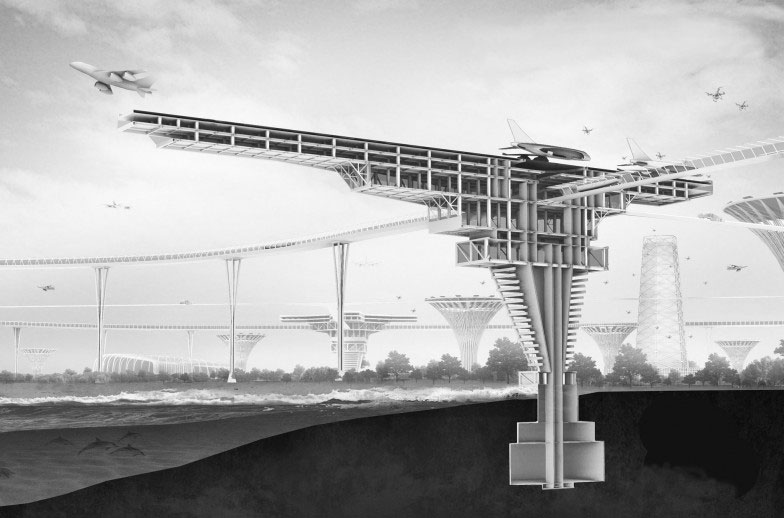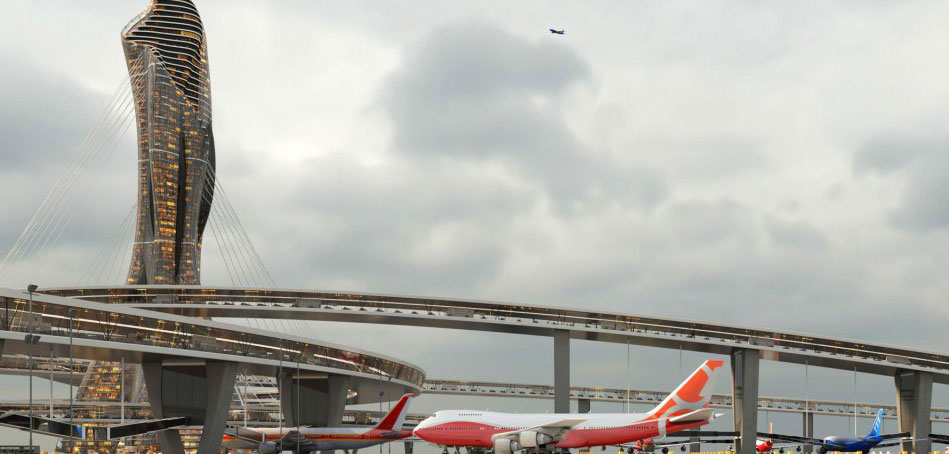Fentress Architects has revealed the winners of the 2019 Fentress Global Challenge, the seventh edition of its international student architecture competition.
This year’s challenge was to envision the Airport of the Future in the year 2075, and attracted more than 500 registrations, with competitors coming from more than 50 countries. With their designs, participants sought to improve every aspect of the airport passenger terminal building, focusing on mobility, urbanization, globalization, technology, flexibility, security, project feasibility, and the passenger experience.
The first prize was won by Daoru Wang, of North Carolina State University, Raleigh, for Infinity Airport. According to Wang, the design was intended to improve the efficiency of airport typology, and involved an intensive study of aircraft traffic flow and development of the concept of a ‘drive-through airport’.
Wang added, “Taking inspiration from the torus knot, which appears like two overlapping Infinity symbols, the general shape of the airport combines the complexity of the form and the ideology of Infinity by creating the circular and endless concourse system.”
Second prize went to Samantha Pires of New Jersey Institute of Technology, Newark for the Newark Airport Biophilic Headhouse and Community Nexus.
Pires explained, “The project uses this rail access and a consolidated terminal to explore ideas defined by economic analyst John Kasarda, author of the aerotropolis. The aerotropolis is a conceptual type of urban form, with the airport as the center of the metropolis.
“This project applies the concept of the aerotropolis and proposes that the Airport of the Future is one that brings economic development to the community that it serves. It proposes that the Airport of the Future should not be governed by the fear and ‘security theater’ that runs modern airports, but that it should be a place for community engagement, job opportunities, and a catalyst for neighborhood development and benefit.”
Winner of the third prize was Christopher Johnson, University for the Creative Arts, Farnham, UK, for LondonHeathrow2075. He said of his design, “A new airport concept typology explores future technological trends and smart cities to connect humanity directly to generate a new urban fabric within the existing airport landmass of Heathrow. A drive-through concept that sits below the airport terminal allows aircraft traffic and waiting times to be reduced.
“Technological innovations suggest a reduction in physical passports, security and immigration as it moves to an online environment. An international zone that lives within a country that provides free roam to visitors and guests creates a global destination that re-invests in the notion of the UK’s stance on the global market.”
The 2019 People’s Choice Awards, run on Fentress Architects’ Facebook page, reaching hundreds of thousands of people. Shortlisted participants ran their own social media marketing campaigns to generate thousands of likes. In first place, with more than 2,800 votes, were Chai Yi Yang and Ng Yi Ming of the University of Malaya, Kuala Lumpur, Malaysia, followed by Riki Rozenberg, Evelyn Kreslavsky and Mai Whiteson of Tel Aviv University, Tel Aviv, Israel, with 2,500 votes.
“Each year, the Fentress Global Challenge captures the creativity of young talent as contestants conceive innovative design ideas that create a better physical environment for our future world. The critical thinking and quality of ideas presented in this year’s competition were no exception; the entries were absolutely stunning,” summed up Curt Fentress, principal in charge of design at Fentress Architects.
First prize is US$10,000 and the opportunity to receive the award from Curt Fentress at a prestigious architectural event. Second place will receive US$3,000, third place USD$2,000, and the two People’s Choice Awards will receive USD$1,000 each.




